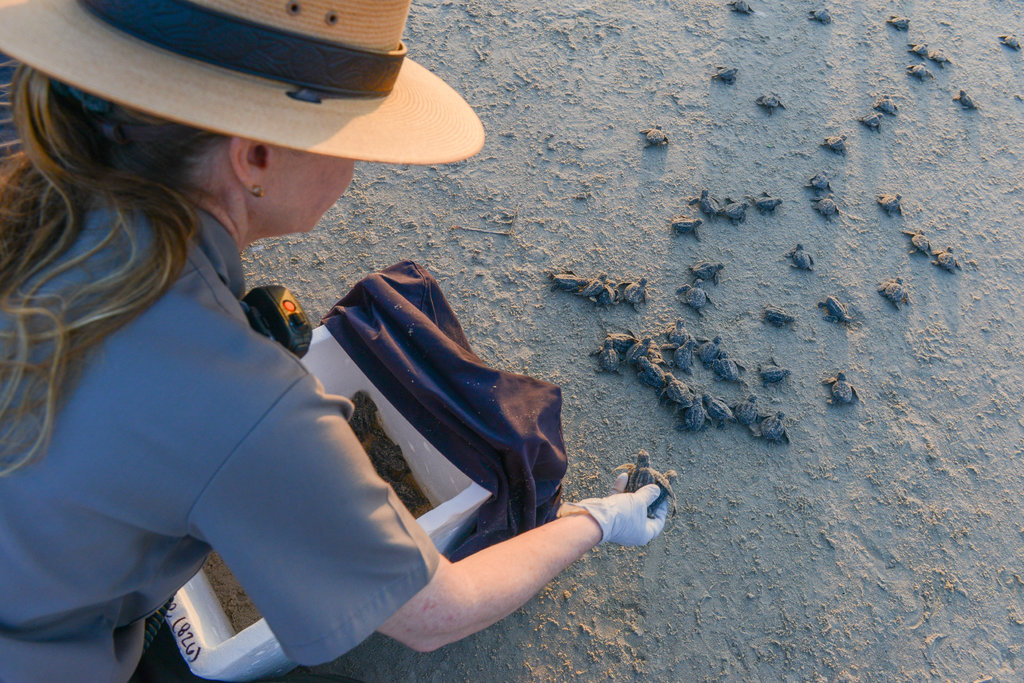The Making of an Endangered Species
Monday, August 28th, 2017
Donna Shaver, chief of the Sea Turtle Science and Recovery Program at Padre Island National Seashore, releases Kemp’s ridleys hatchlings onto the beach. Photo: New York Times.
This is Passport to Texas
The Kemp’s Ridley Sea Turtle is the world’s most critically endangered sea turtle.
And most nesting in the US by this species occurs in Texas.
Although a native nester in Texas, their primary nesting beach is in Mexico. Dr. Donna Shaver oversees sea turtle science and recovery at Padre Island National Seashore.
The National Park Service along with Texas Parks and Wildlife and other partners had been working since the 1970s to form a secondary nesting colony of endangered Kemp’s Ridley Turtles right here at Padre national Seashore.
They developed the secondary site as a safeguard against potential extinction and other catastrophes. Their population was nearly decimated in the 1940s.
The biggest threats over time – the largescale taking of the eggs from the nesting beach in Mexico. They were sold in markets as a supposed aphrodisiac. There was also loss of nesting turtles taken for food and then also the skin to make leather products. Then, though time, the loss of juveniles and adults incidental to fisheries operations; primarily shrimp trawling, but also some hook and line captures and other types of fisheries.
How we’ve protected Kemp’s Ridley Sea Turtles in Texas tomorrow.
The Wildlife and Sport Fish Restoration program supports our series, and funds diverse conservation projects throughout Texas.
For Texas Parks and Wildlife…I’m Cecilia Nasti


 Passport to Texas is a
Passport to Texas is a  Passport to Texas is made available by:
Passport to Texas is made available by: